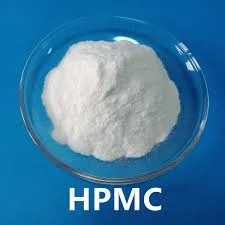
Авг . 21, 2024 02:24 Back to list
High-Performance HPMC for Enhanced Tile Adhesive Formulations and Applications
Tile Adhesive Understanding the Role of HPMC
Tile adhesive is a crucial component in the installation of ceramic, porcelain, and other types of tiles. It ensures that the tiles remain securely bonded to the surface, providing both durability and aesthetic appeal. One of the key ingredients used in modern tile adhesives is Hydroxypropyl Methylcellulose (HPMC), a cellulose ether that has gained widespread popularity due to its unique properties and benefits.
HPMC is a white, odorless powder derived from natural cellulose. It is water-soluble and can form a gel-like consistency when mixed with water, which makes it an ideal additive for tile adhesives. The incorporation of HPMC into tile adhesive formulations significantly enhances their performance characteristics. Here are several reasons why HPMC is a preferred choice in tile adhesive production.
Tile Adhesive Understanding the Role of HPMC
2. Extended Open Time One of the standout features of HPMC is its ability to extend the open time of tile adhesives. Open time refers to the period during which the adhesive remains workable after application. With HPMC, installers have a longer window to position the tiles without the adhesive setting too quickly. This is particularly advantageous in larger installations, where precise alignment is critical.
tile adhesive hpmc

3. Water Retention HPMC possesses excellent water-retention properties, which is essential for ensuring that the adhesive remains workable for an extended period. This characteristic prevents the adhesive from drying out too quickly, allowing for better bonding between the tile and the substrate. As a result, tiles can be installed in challenging conditions, such as hot and windy environments, without sacrificing adhesion quality.
4. Enhanced Adhesion Strength The inclusion of HPMC in tile adhesives contributes to improved adhesion strength. It allows for a strong bond that can withstand various stresses related to temperature fluctuations, moisture, and mechanical loads. This durability ensures that the tiles remain firmly in place for years, reducing the likelihood of tile cracking or detachment.
5. Versatility Tile adhesives formulated with HPMC can be used on a wide range of substrates, including concrete, cement backer board, and even existing tiles. This versatility makes HPMC an invaluable component in the tile installation process, catering to different project requirements and surface conditions.
Conclusion In conclusion, HPMC is a vital ingredient in modern tile adhesives, offering numerous benefits that enhance the overall performance of tile installations. Its contributions to workability, open time, water retention, bonding strength, and versatility make it an essential component for both professionals and DIY enthusiasts. As the demand for high-quality tile installation continues to grow, the role of HPMC in tile adhesives will undoubtedly remain significant, paving the way for advancements in construction practices and improved outcomes. Whether you are renovating your home or completing a commercial project, opting for tile adhesives with HPMC is a choice that will ensure durability and aesthetic excellence.
-
Unlocking the Benefits of HPMC Products: A Gateway to Versatile Applications
NewsAug.07,2025
-
Unleashing the Potential of HPMC Ashland: A Comprehensive Look
NewsAug.07,2025
-
Tile Bonding Cellulose: The Key to Superior Adhesion and Durability
NewsAug.07,2025
-
Hydroxypropyl Methylcellulose Powder: The Versatile Component in Modern Pharmaceuticals
NewsAug.07,2025
-
Hydroxyethyl Cellulose: The Versatile Solution for Various Industries
NewsAug.07,2025
-
Hydroxyethyl Cellulose (HEC): The Versatile Polymer for Various Applications
NewsAug.07,2025







